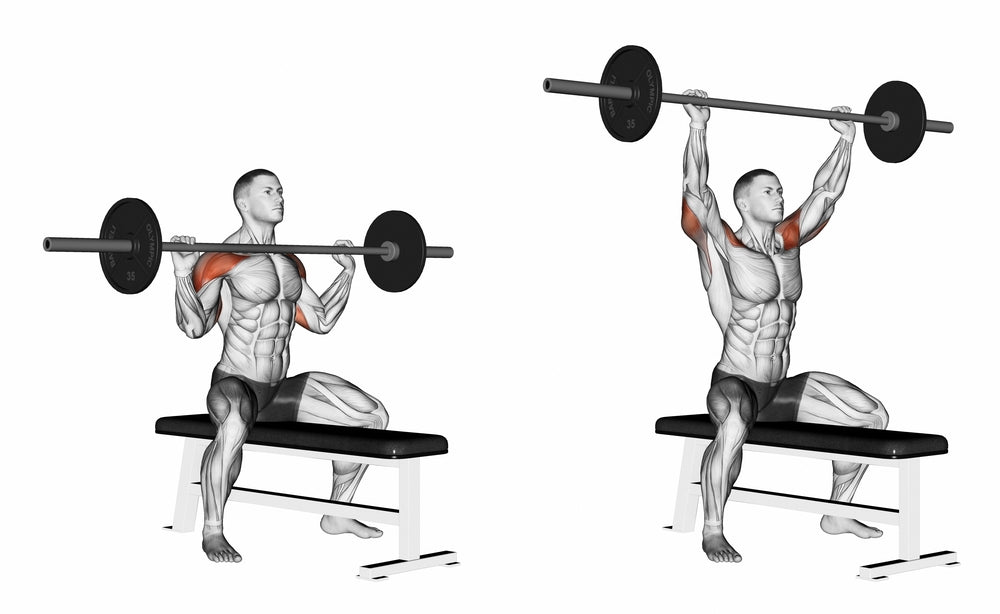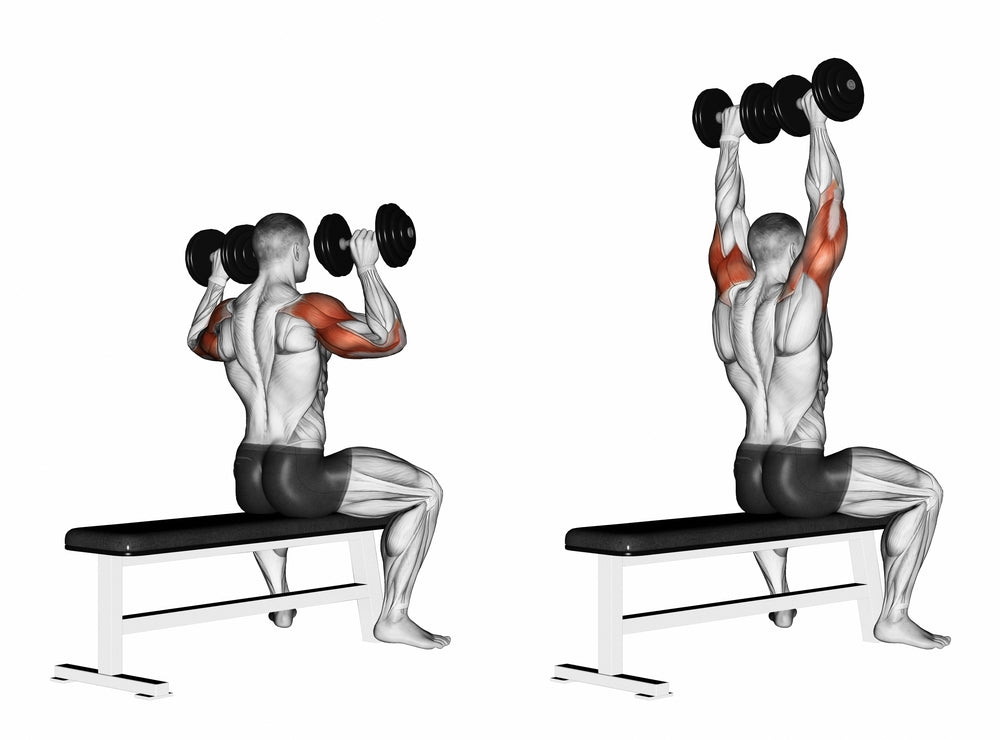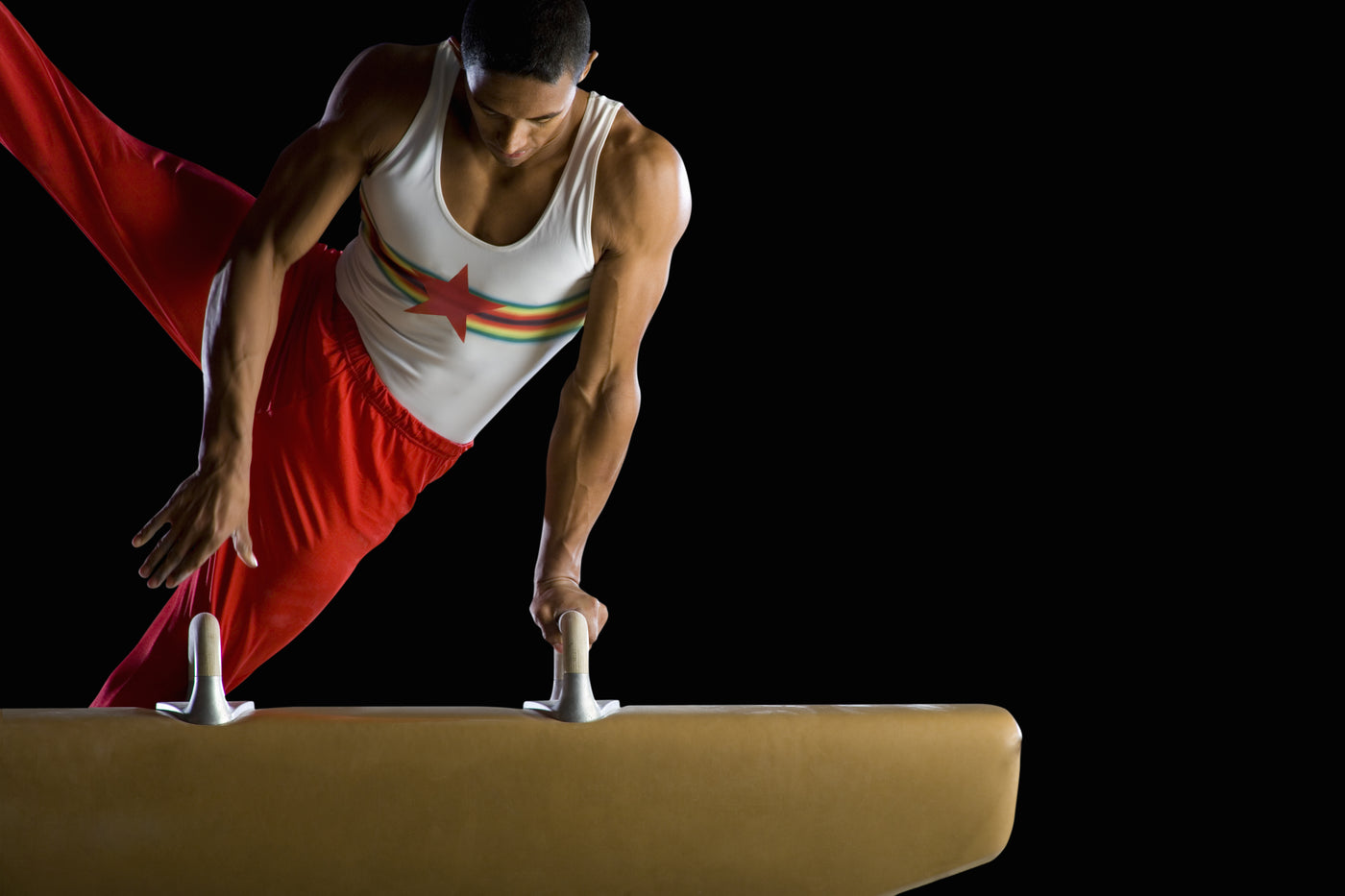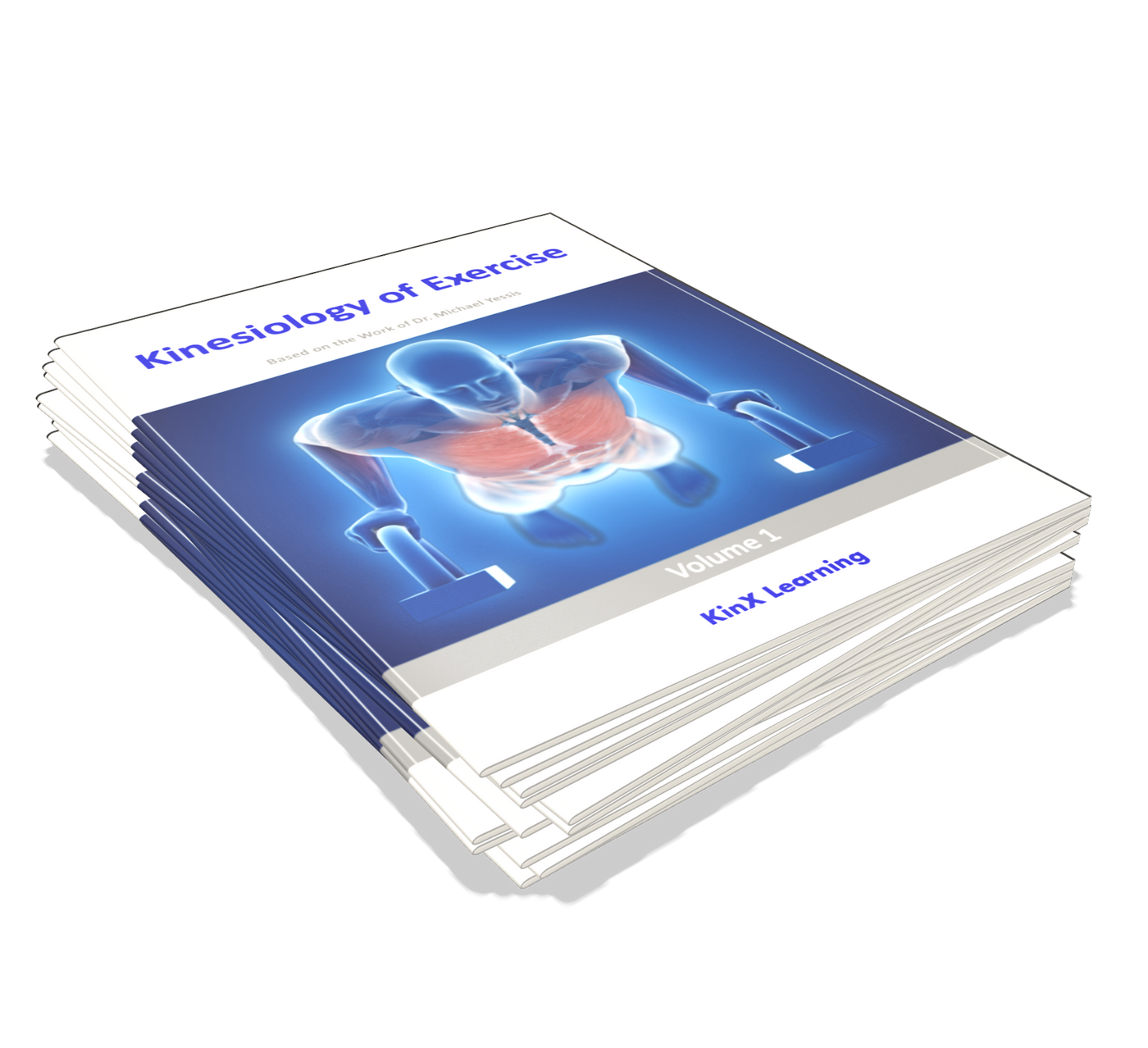Exercise Anatomy
Overhead Press
The overhead (military) press was once a part of weightlifting competitions. However, because there was so much cheating associated with the exercise execution, it was eventually dropped from competition. Nevertheless, the overhead press continues to be a favorite exercise among athletes and bodybuilders.
And rightly so, since the overhead press is very effective for strengthening the shoulders, arms, and overall body stability. There are two main methods of execution: the military press in which the elbows are pointed forward, and the press from the chest in which the elbows are pointed outward.

Major Muscles and Actions Involved
Variant 1: Miltary Press
The term military press is not in common use today but the exercise is still used extensively. In the shoulder joint the major muscles are the anterior deltoid, the pectoralis major (upper portion), and the coracobrachialis. They are involved in shoulder joint flexion in which the upper arm travels in the anterior-posterior plane from a position in front of the body upward to an overhead position. In the shoulder girdle the major muscles are the serratus anterior and the upper and lower fibers of the trapezius. They are involved in upward rotation of the scapulae, in which the right scapula turns counterclockwise and the left scapula turns clockwise when viewed from the rear. In addition, the scapulae are elevated (move directly upward) during execution, which involves the uppermost trapezius and the levator scapulae. In the elbow joint there is extension which involves the triceps brachii. In this action the forearms move away from the upper arms which move away from the shoulders until the arms are straight and directly overhead.

Major Muscles and Actions Involved
Variant 2: : Press from the shoulders with the elbows out
The shoulder joint muscles involved in this variant are the middle and anterior deltoid and the supraspinatus. They perform shoulder joint abduction, in which the arms move from an out-to-the sides position to an overhead position. In the shoulder girdle and elbow joint, the same muscles and actions occur as in Variant 1.

Sports Uses
The combination of actions involved in the overhead press is used in a multitude of sports. These actions play a major role in weightlifting (clean and jerk and snatch), in gymnastics (vaulting push off the horse, handstand press), tumbling (pushing off the floor), hand balancing (pushing and holding the top performer), and in the recovery strokes in swimming.
Exercise Analysis
- When executed with the elbows in, this exercise is very similar to the jerk portion of the clean and jerk weightlifting event. In this version, when using very heavy weights, the exercise is done with a slight initial jerk of the arms and a push with the legs (known as the push-press). This action helps to overcome the inertia of the bar and helps to get it moving upward. In this version you stop in the down position.
- When executing the overhead press in a standing position, you must have a strong midsection (mainly the lower erector spinae). The erectors contract isometrically to hold and maintain your spine in a very firm position. If your spine gives or has movement during the execution of this exercise, injury can result.
- To help prevent the loss of balance when executing this exercise, you should look straight ahead or just slightly upward while keeping your head in a normal upright position. Looking up may cause you to lose balance and fall backward.
- Also, looking up places your spine in a more hyperextended position and changes the exercise - in this case, you may actually be doing an incline press and if the arching is very severe, a bench press! In addition, if you are using maximum weights, looking up can cause serious spinal problems.
- Do not think that severe back arching is impossible. In the early days in the sport of weightlifting, when the overhead press was still one of the events, weightlifters leaned backward during execution of this exercise to get a better mechanical advantage to lift the weights.
- Some weightlifters arched so much that they actually looked as if they were doing a standing bench press. This severe arching caused many back problems, and because of this the weight belt came into use to prevent the back from becoming excessively arched.
- The overhead press should be done with dumbbells when a maximum ROM is needed. With dumbbells, you can also do the exercise alternating your arms. To do so, raise your arms alternately as high as possible so that there is maximum flexion (or abduction) in the shoulder joint and also some lateral flexion of the spine. This enables you to reach substantially higher than when both arms are exercised together.

Want to Learn More?
Try our premium ebooks in the kinesiology of exercise. Satisfaction guaranteed.
